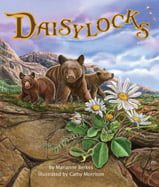Alignment to Standards for KY

| Grade | Number | Standard |
|---|---|---|
| 4 | SC-04-4.7.1b | Distinct environments support the lives of different types of organisms. |
| 4 | SC-4-ET-U-1 | ecosystems are defined by the relationships that occur within them. These relationships can be determined through observation of the organisms and their environment. |
| 4 | SC-4-EU-U-1 | classifying Earth materials according to their properties allows decisions to be made about their usefulness for various purposes. |
| 4 | SC-4-I-S-1 | cause and effect relationships existing between organisms and their environments |
| 4 | SC-4-I-U-1 | all living things depend on their environment and other organisms within it for their survival. Certain patterns of behavior or physical features may help an organism survive in some environments yet perish in others. |
| 4 | SC-4-I-U-2 | environmental relationships extend beyond food (e.g. shelter, seed transport). |
| 5 | SC-05-2.3.3a | describe Earthês atmosphere as a relatively thin blanket of air consisting of a mixture of nitrogen, oxygen, and trace gases, including water vapor; |
| 5 | SC-05-2.3.3c | Earth is surrounded by a relatively thin blanket of air called the atmosphere. The atmosphere is a mixture of nitrogen, oxygen, and trace gases that include water vapor. The atmosphere has different properties at different elevations. Conclusions based on |
| 5 | SC-5-EU-U-3 | the earth is surrounded by a blanket of air called the atmosphere that is essential to life because of some of the gasses it contains. |
| 5 | SC-5-I-S-1 | populations and communities within various ecosystems |
| 5 | SC-5-I-S-4 | ecosystems and the interactions occurring within them |
| Primary | SC-EP-2.3.1 | describe earth materials (solid rocks, soils, water and gases of the atmosphere) using their properties. Earth materials include solid rocks and soils, water and the gases of the atmosphere. |
| Primary | SC-EP-3.4.1 | Organisms have basic needs. For example, animals need air, water and food; plants need air, water, nutrients and light. Organisms can survive only in environments in which their needs can be met. |
| Primary | SC-EP-4.7.1 | cause and effect relationships existing between organisms and their environments. |
| Primary | SC-EP-4.7.1a | Organisms require an environment in which their needs can be met. When the environment changes some plants and animals survive and reproduce and others die or move to new locations. |
| Primary | SC-P-BC-U-2 | understand that living things are found almost everywhere on our planet, but organisms living in one place may be different from those found somewhere else. |
| Primary | SC-P-I-S-1 | characteristics of an ecosystem |
| Primary | SC-P-I-S-2 | how organisms depend on their environments |
| Primary | SC-P-I-U-1 | the world has many different environments. Distinct environments support the lives of different types of organisms. |
| Primary | SC-P-UD-S-1 | Students will describe the basic needs of organisms and explain how these survival needs can be met only in certain environments |
| Primary | SC-P-UD-S-2 | identify the characteristics that define a habitat |
| Primary | SC-P-UD-U-3 | some animals are alike in the way they look and in the things they do, and others are very different from one another. |